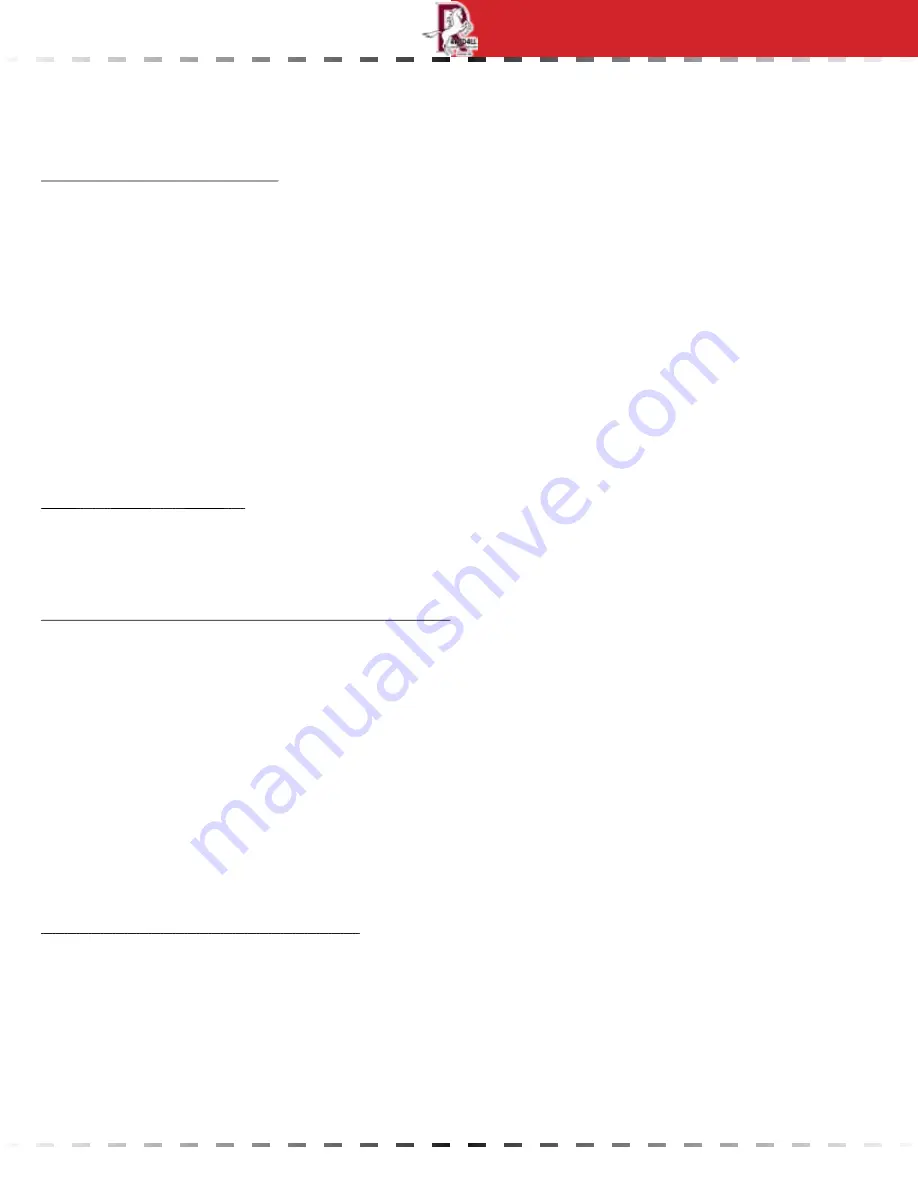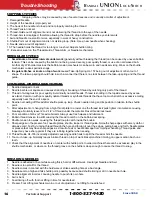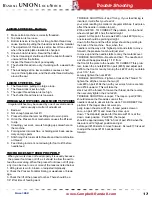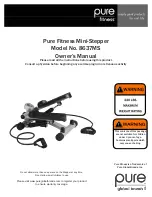
R
andall
UnIOn
l
Ock
-S
tItch
Trouble Shooting
Since 1858
www.Campbell-randall.com
17
LooSe StItCheS - Bottom
1.
Make certain machine is correctly threaded.
2.
Top tension is too loose
3.
bottom tension is too tight. A strong bobbin thread may
cause trouble in pulling the thread-locks into the material.
4.
The adjustment of thre lock is set too low. Often evident
when the needle plate elevation is changed.
5.
Uneven bobbin tension. rewind the bobbin
6.
check threading of shuttle and that the bobbin thread is
unwound from the bottom
7.
Inspect the thread to be of good quality
8.
The shuttle thread is too dry, if working with a waxed bob-
bin
9.
The awl being set too low sometimes causes a short
loop on throat plate side, and the shuttle thread will whip
around the awl.
LooSe StItCheS - top
1.
The thread arm pulling too large a loop.
2.
The thread lock is set too high.
3.
The upper thread tension is too high.
4.
The shuttle thread tension is too weak.
IrreGULAr StItCheS AND Short StItCheS
Irregular stitches may be caused by one of several reasons
and is usually a matter of adjustment
1.
bad awl
2.
not enough presser-foot lift
3.
presser foot mechanism not lifting dut to worn parts
4.
oil on the presser-foot mechanism causes the lift lever
to slip
5.
crowding your work, or work hanging up somewhere on
the machine
6.
forcing work into machine, or holding work back, esspe-
cialy on large parts
7.
Stitch length is too small for needle and Awl combination
or thread
8.
feed timing incorrent, not allowing for foot to lift before
needle feed
WorK DoeS Not feeD ProPerLY
When your work does not feed properly it is usually because
the presser foot does not lift, as it should to allow the awl to
feed the work along. When the presser foot does not lift prop-
erly it can be due to one or more of the reasons listed below:
1. Lifting lever is worn, broken, or adjusted improperly.
2. check the presser foot bar Spring or weakness or break-
age.
3. check the lift of the presser foot bar. There should be a
1/8” lift at time of feeding work.
TroUble ShooTInG—feed Timing: If your feed timing is
incorrect, it will affect your feed of
your work resulting in smaller or irregular stitches. It will, also,
affect the needle in relation to part
#165 and #180. TO CORRECT this problem, turn the hand
wheel until part #214 has the bell straight
upward. At this point, the screws #220 on part #219(cam)----
one screw should be pointing straight
down to the floor and the other screw should be pointing to
the back of the machine. now, when the
needle is all the way at its’ highest point and starts to move
forward, the pressure foot should just start
to move up and the needle starts to carry the material over.
TroUble ShooTInG---needle and Awl: The needle and
awl should be approximately 1/16” from
the front of the plate to the needle. To correcT this prob-
lem, loosen the 4 nuts(#229) on part (#235) and adjust part
#235 to the front or rear by turning the 4 #237 until you obtain
your 1/16” ,then
securely tighten the nuts #229.
TroUble ShooTInG---Tighten or loosen the Thread: To
tighten the stitches, loosen the two (2)
nuts #20 on part #164 then, with your wrench, turn eccentric
stud #164 upward. This will take the
slack out of the thread. To loosen the thread, do the reverse,
then securely tighten the 2 nuts #20.
TROUBLE SHOOTING---Looper: The looper---part (#180)
should release the thread as soon as the
needle is about to decent into the work. To correcT this
problem if the looper does not work pro-
perly, loosen the screw (#161)—thread guide screw on
cam—on part (#170) and move the screw up or
down. The standard position for this screw #161 is at the
down, must, position. Part #165, the looper
should be approximately 1/64”in front of part #180 when the
take-up is at its’ highest position and just
before part #180 starts to move forward. Screw #173 is used
to adjust the looper #161 backward and
forward.

































